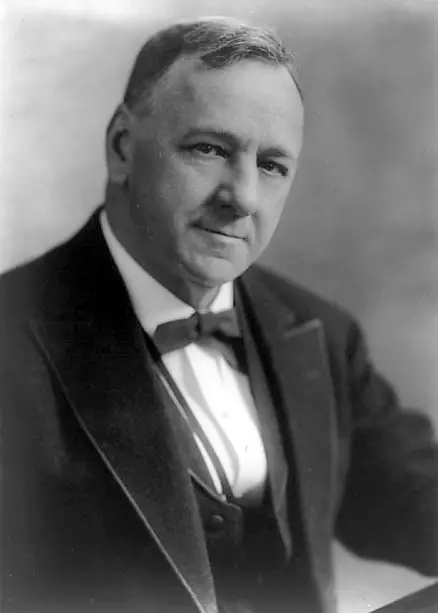Have you ever sipped coffee in a contemplative mood and wondered why coffee got the name “joe”? There are quite a few interesting theories behind this, so if you’re a huge fan of naval history and/or etymology, read on!
The most prevalent story behind why coffee is referred to as joe comes from World War I. Joe is short for Joseph, or in this case, Josephus Daniels, former U.S. Secretary of the Navy. Josephus Daniels banned. the consumption of alcohol in the Navy, so soldiers started drinking more coffee and began referring to it as a “cup of Joseph Daniels,” or “a cup of joe” in a veiled slight towards Daniels.
Out of all the stories for the term cup of joe, this one is the most entertaining. It’s got all the elements of intrigue: war, rebellion, the Navy, the name Josephus, and of course, President Woodrow Wilson.
Josephus Daniels: not your average Joe
Josephus Daniels became Secretary of the Navy under President Woodrow Wilson. Daniels wished to enforce a stricter morality in the Navy(America has a history of strongly Puritan values). Of the many things he banned, one was the consumption of alcohol.
As alcohol consumption plummeted, coffee consumption rose. Of course, sailors were not too happy about being denied their favorite drink, so they began calling coffee a cup of joe in a mock salute to Secretary Daniels.
Interestingly enough, there are some holes in this story.
For starters, Congress abolished the spirit ration in 1862, meaning it would be very difficult for sailors to get their hands on U.S. navy ships anyway. One could argue that the ban also applied to sailors on naval bases, though.
The shortened words theory
If you’re an English language buff, this joe origin theory will pique your interest.
The term cup of joe comes from two other nicknames for coffee: java and mocha. Java and mocha refer to the Indonesian island of Java, where coffee is widely grown, and Mocha, the ancient Yemeni port which was the first to export coffee.
Java and mocha were then shorted to “a cup of jamoke,” which was popular to say in the 1930s.
Jamoke, of course, was a terrible nickname.
As good as coffee is, inviting your date for a cup of jamoke is sure to kill the mood.
So as the story goes, “cup of jamoke” was shortened to a “cup of joe,” and the rest is history.
The common man theory
The next theory on the origins of the phrase “cup of joe” is that coffee is the common man’s drink: the avereage joe. Since coffee is the common man’s drink, and “joe” is the common man’s name, coffee and joe became synonymous.
Diner culture may also have had something to do with it, as more and more diners opened up in the 1950s and 1960s. Working men stopped by diners for their morning coffee, and when enough average joes were drinking coffee, coffee became a “cup of joe”.
The common man theory may also have a military aspect to it. During World War II and the Korean War, many men served in the military. Incidentally, that’s where the word “G.I Joe” comes from.
The trademark theory
Many phrases that come into common language are due to marketing. A company called the Martinson Coffee Company was the first to trademark the phrase “cup of joe.”
It’s possible that people referred to Martinson coffee as a cup of joe, due to the fact that the owner was named Joe Martinson.
The Martinson coffee company was one of the oldest coffee companies in the US, having been around since 1898.
Why do they call coffee java?
Coffee is also called Java because of the Indonesian island of Java, which is one of the most famous places where coffee is grown.
That’s also how the term mocha comes about, as a reference to Mocha, an ancient Yemeni port.
Conclusion
No matter which origin story for your morning coffee perks you up, it points to the fact coffee is strongly intertwined in our culture. It’s an amazing drink that has been enjoyed by generations past and generations to come.




